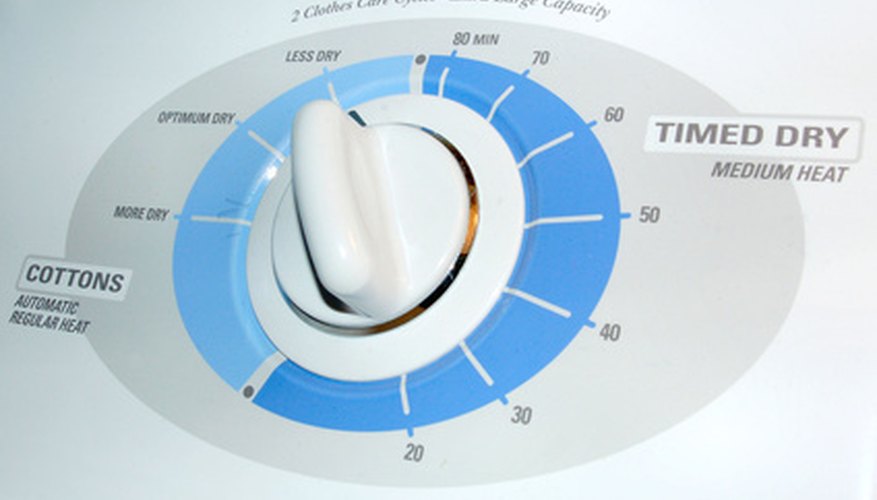Modern electric clothes dryers are designed and built with some forethought about shipping and handling. Manufacturers know they must allow for some jostling, bumping, and even perhaps tipping on its side. While it might not be recommended, it really should not cause damage to lay a clothes dryer on its side on moving day, if handled carefully.
Clothes Dryer Construction

Electric clothes dryers basically consist of a cabinet with a door, a large rotating drum and its roller-brackets and belts, an electric motor, air ducts, heating elements, lint filter, wiring and controls. Internally, these components are pretty rigidly stable in their locations. The large drum is fixed at front and rear, the motor is anchored in place, the roller-brackets are securely fastened, and even the wiring is clipped to various places along its route.
Recommendations

Transporting a clothes dryer laid on its side can create some unexpected consequences if not adequately prepared for. Unless padding is used to protect side panels, unsightly scratches may occur. Use adequate blankets and other padding material to minimise damages. Do not place heavy items or things with sharp edges on top of the dryer that is on its side, as this could scratch or dent the appliance.
- Transporting a clothes dryer laid on its side can create some unexpected consequences if not adequately prepared for.
Considerations
It is probably best to only lay a clothes dryer on its side as a last resort, since it can cause damage if great care is not taken to protect finishes. Because appliance hand-trucks are designed to move and handle dryers from the back and underneath, using a hand-truck to move a dryer in its sideways position would undoubtedly cause damage to the dryer finish.
